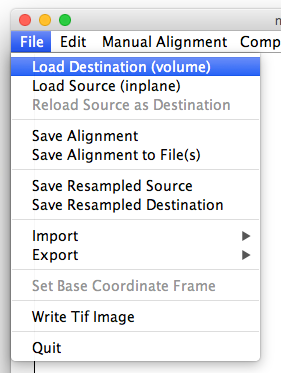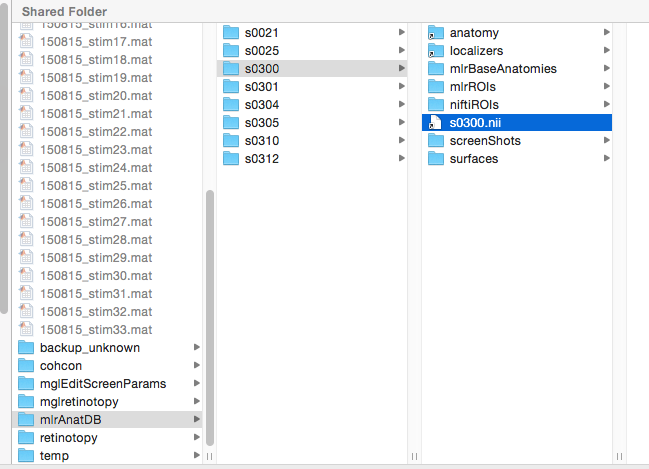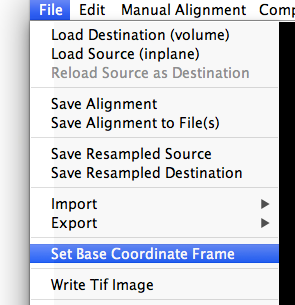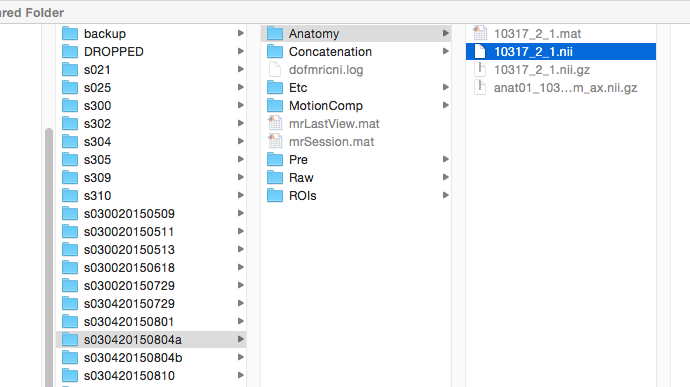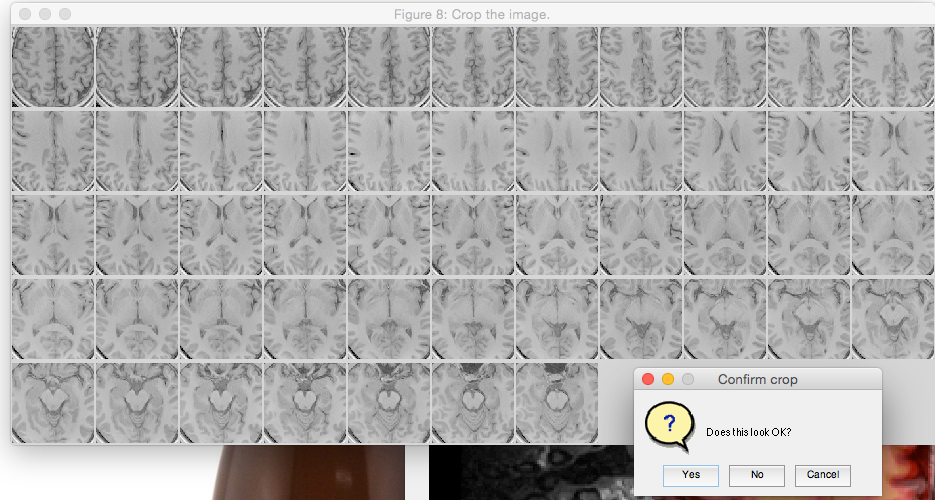Alignment
Go to your folder: cd ~/data/cohcon/s030020150101, and run mrAlign.
Load Canonical Anatomy
Select your Canonical
Set as Base Anatomy (if this hasn't been done)
Load Source Session Anatomy
Set Slice and Alpha so that brain is visible
Compute Alignment
Compute Coarse alignment first followed by the fine. This is fastest–if you skip coarse the alignment may take a long time (up to several minutes).
Check Alignment: Toggle "Overlay"
Don't just toggle it once and accept it, check that the sagittal, coronal, and axial views all look good. Try going to different slices in each orientation. If there is ANY DISCREPANCY AT ALL–YOU ARE NOT ALIGNED!!!
Fixing Poor Alignment: Crop
Often the alignment fails to be perfect, usually because there is noise outside the brain, in the skull, eyes, etc. If you scan on the 16ch coil you must crop.
You will be prompted to select a “top” slice, then a “bottom” slice, and then a central slice. Avoid the skull if possible, and in general avoid any regions where you expect there might be noise.
Set your crop region to be within the skull, and avoid areas that show a lot of noise (like in this image outside the brain and near the eyes.
Here I picked only the back of the brain, avoiding as much as possible the noisy regions. I may have gone too low with my “bottom” slice, you can see that it ends up in the brain stem and possibly near the sinus cavity in the front. Accept the crop once you have a good one and re-run the alignment. Repeat until your alignment looks perfect.
Save alignment
File > Save alignment
Export inplane alignment to EPI
So far you have only aligned the “Session” to the “Canonical” anatomy. You still need to copy this new alignment to the EPI files:
1) File > Reload Source as Destination
2) Load source and get any MotionComp EPi file (e.g., in motionComp/TSeries/***.nii)
3) Initialize alignment from header (Qform)
4) File > Export > Export to mrLoadRet 4.5 (0 for mean and to all) to raw and motion comp groups
